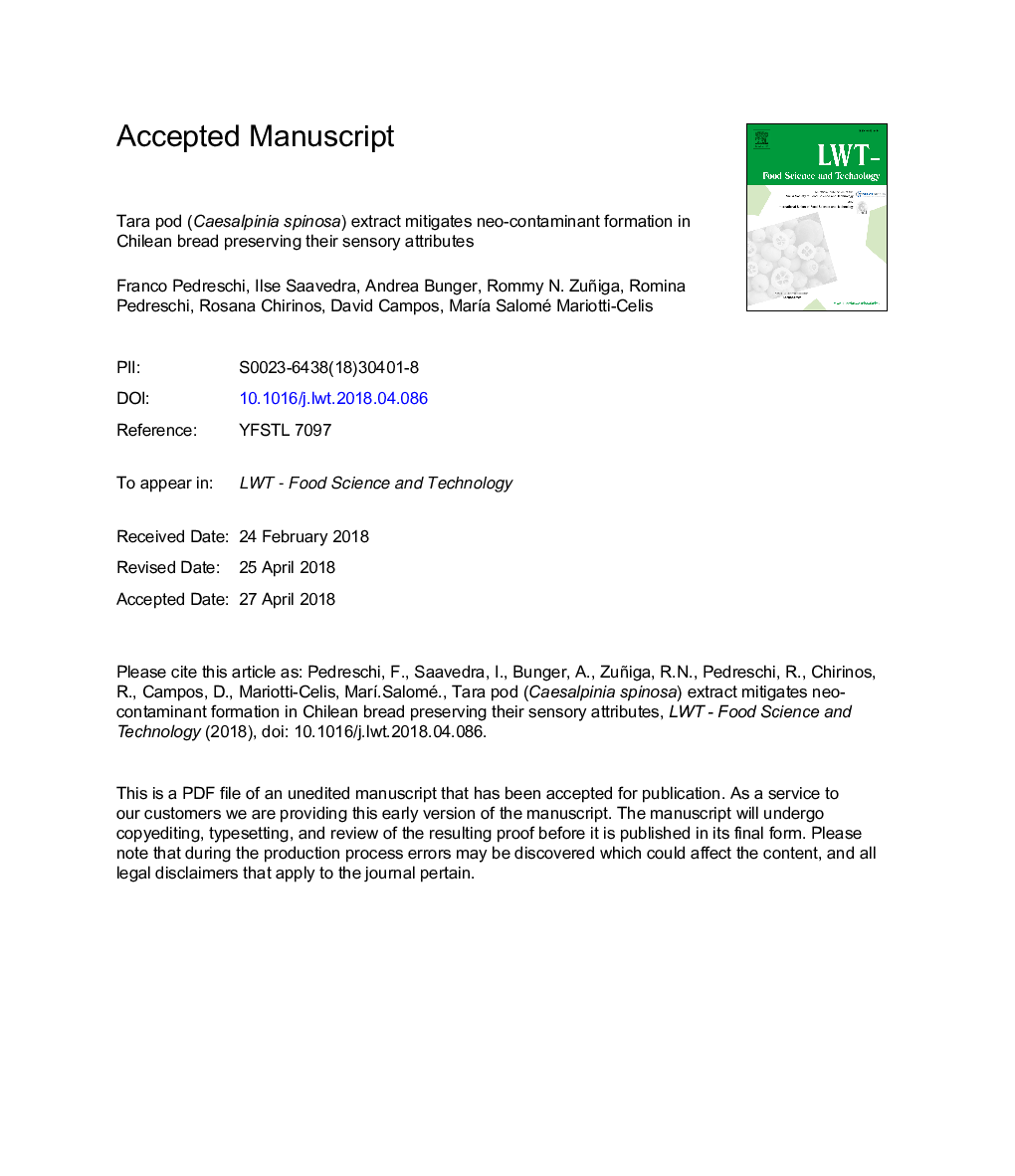| Article ID | Journal | Published Year | Pages | File Type |
|---|---|---|---|---|
| 8890897 | LWT - Food Science and Technology | 2018 | 34 Pages |
Abstract
"Hallulla" is a highly consumed type of Chilean bread, which may contain considerable amounts of some Neo-Formed Contaminants (NFCs). The objective of this research was to study the effect of tara (Caesalpinia spinosa) pod polyphenolic extract (TPPE) on the mitigation of acrylamide (AA) and hydroxymethylfurfural (HMF) in “hallulla” bread without affecting its sensory attributes. The effect of different TPPE concentrations was evaluated (0-3000â¯mg kg-1) over NFC formation during “hallulla“ baking and its impact on sensory attributes. AA was mitigated by â¼90% at 1500â¯mg/kg TPPE added to the bread pieces. A similar descriptive profile of the final product, with significant changes only in the crumb color was observed. HMF was mitigated by â¼85% in bread pieces, when the highest concentration (3000â¯mg/kg) of TPPE was used. Our results highlight the potential of using polyphenolics from tara pod extracts to reduce the exposure of consumers to dietary neo-formed contaminants.
Related Topics
Life Sciences
Agricultural and Biological Sciences
Food Science
Authors
Franco Pedreschi, Ilse Saavedra, Andrea Bunger, Rommy N. Zuñiga, Romina Pedreschi, Rosana Chirinos, David Campos, MarÃa Salomé Mariotti-Celis,
